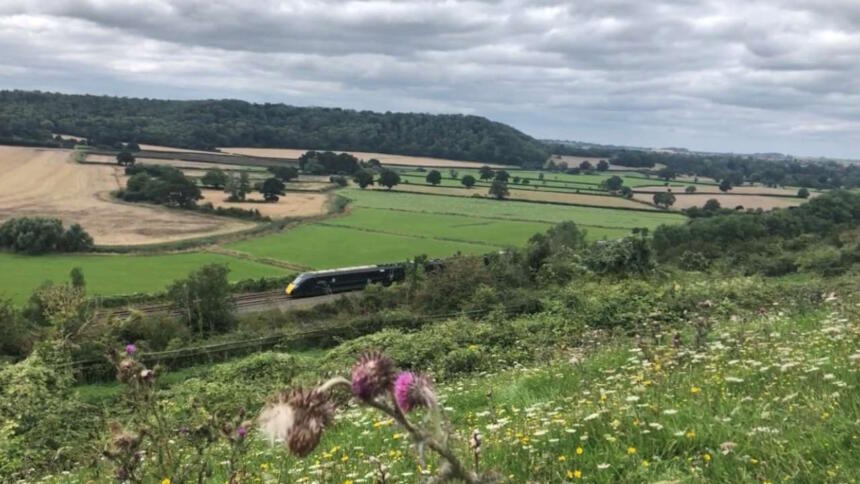Monday 2 October was is World Habitat Day, and Network Rail is drawing attention to its efforts to enhance the habitat of a rare butterfly. It has also explained why felling forty trees has been part of this work.
Network Rail is working with Natural England and Somerset Wildlife Trust to restore and enhance a site next to Welham Cutting in Somerset, where the Large Blue lives.
After the Large Blue was declared extinct in the UK in 1979, conservationists successfully reintroduced it to a small number of sites in southern England during the late 1980s and early 1990s.
Green Down, which is adjacent to Welham Cutting and forms part of the 124-hectare East Polden Grasslands Site of Special Scientific Interest, is the sort of grassland habitat where the Large Blue thrives.
To be a suitable habitat for the Large Blue, Green Down needs to support each stage of the butterfly's lifecycle. The caterpillars feed on wild thyme and marjoram, and are then carried away by ants of a specific species that mistake them for grubs and take them to their nest. Once there, the caterpillars feed on the ant grubs in the nest until they have grown to the stage where they turn into a chrysalis.
For this to happen, the ant nests need to be at a suitable temperature, but at Green Bank, heavy shade from ash trees has been reducing the temperate to lower than the caterpillars need.
The shade also reduced the number of flowering plants and insects. Network Rail has removed forty trees from the railway embankment at Welham Cutting. Many of the trees had ash dieback disease, and Network Rail claims that by removing them, it has improved safety on the railway line and enabled easier maintenance.
Angharad Owen, Network Rail environment manager, said: “We have worked with a number of different stakeholders including Somerset Wildlife Trust, Natural England, and Large Blue Partnership to ensure that the habitat at East Polden will remain viable for these rare butterflies for years to come and I'd like to thank them for their efforts.
“Any work that takes place at the site has to factor in a number of other environmental considerations, owing to the potential presence of protected species such as dormice and great crested newts, as well as the Large Blue. The location of the site also posed a number of challenges, with steep embankment sides. Together with our partners we have overcome these ecological and logistical challenges in a way that will benefit wildlife in the area into the future.”
Mark Green, of Somerset Wildlife Trust, said: “We're pleased that Network Rail has felled a section of ash trees along the railway adjacent to our Green Down nature reserve, which is home to a wonderful variety of plants, insects and birds, including the globally threatened Large Blue butterfly.
“The tall trees were casting a heavy shade on an area of herb-rich, chalky grassland, with the effect of reducing plant and invertebrate species diversity in the vicinity. The reduction of the shading will enable the grassland to recover to a more optimal condition.
“The work has been the result of a collaboration between Network Rail, Somerset Wildlife Trust, Natural England, Habitat Designs (ecologists with expertise in Large Blue butterfly conservation), and Ground Control, who carried out the felling, and is an example of how a partnership approach and carefully considered vegetation management can enhance biodiversity along the rail network.”
More about how Network Rail supports biodiversity on the railway is available here.

The lunatics are the asylum – felling 40 trees for butterflies unbelievable, why not go the who hog decimate the whole country for butterflies.